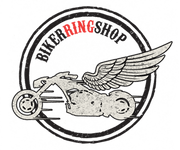Overview: Signet Rings
Did you know that signet rings have a deep and rich history? Their enduring charm has long been used as seals to authenticat...
Are you a fashion enthusiast and bracelet lover who wants nothing but the best-quality Chrome Hearts products? While great-quality Chrome Hearts br...
Chrome Hearts Rings
Did you know that for over three decades, Chrome Hearts jewelry and particularly Chrome Hearts rings have been a die-hard stapl...
Overview on Different Types of Pendants
The type of jewellery we wear can not only make a highly personal statement about who we are but also intri...
From statement cuffs to everyday beaded bracelets to elegantly stylish bangles and charms – bracelets are a fantastic way to accentuate your style ...
Jewelry has long served as a medium of self-expression. It is able to convey our culture, beliefs, or even just our mood on this particular day. In...
Rings have been an integral part of human culture for centuries. They relay status, power, love, and are also used as symbols to mark personal beli...
Gone are the days when jewelry was merely decorative. Eventually, it has expanded its functionality to become a medium of self-expression as well a...
Want to communicate power and authority with your look? You can complement your tough appearance with power symbolism. Check out the first part of ...
Men have been rocking jewelry for ages to show off their power and status. Throughout history, they used various symbols to project authority, domi...
Love… the most powerful and mysterious force in the universe. It is a universal theme that transcends time and culture. The feeling of love be expr...
Let’s discuss the messages your biker attire and accessories convey. You couldn’t help but notice various symbols, inscriptions, numbers, and acron...












